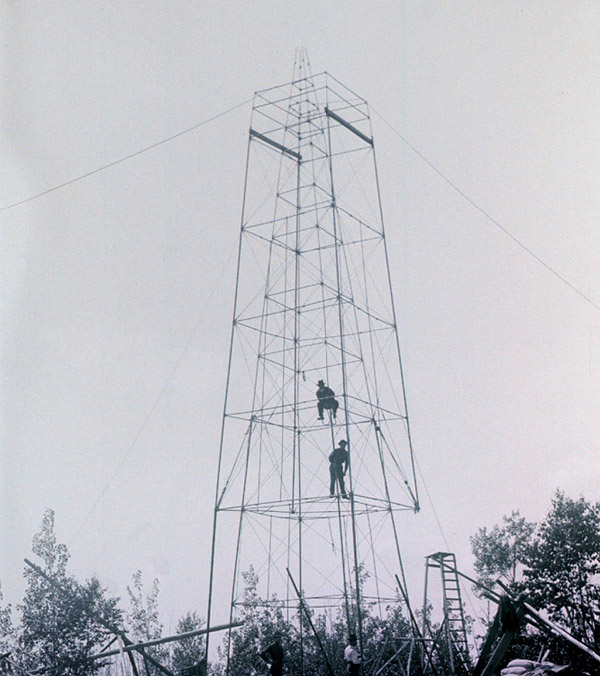Pipe Tower
Pipe towers, so-called because they were made of gas pipe, were used by the U.S. Lake Survey for surveys along the Great Lakes and to observe across Lake Superior.


A pipe tower under construction.
The U.S. Lake Survey (Great Lakes), formerly part of the U.S. Army Corps of Engineers and part of NOAA since 1970, used steel towers made of gas pipe in the early 1900s. These "pipe" towers were four-sided, easily bolted together (or unbolted), and portable.
Pipe towers were used to conduct surveys along the shoreline of the Great Lakes and to observe some very long lines across Lake Superior—longer than should have been possible. However, atmospheric conditions (such as refraction) made the observations possible because a line-of-sight is sometimes "bent" as it passes through the summer's warm air (some distance above the cold lake) and the cold air (at the surface of the lake).
The pipe towers were designed by Junior Engineer Harry F. Johnson in approximately 1904. They were built in 18-foot sections and could reach a height of 108 feet.
- Tower shown: Pipe tower
- Approximate dates of use: Early 1900s
- Maximum height: 108 feet
- Materials of construction: Steel (gas pipe)
- Unique features: Allowed longer-than-expected surveys across Lake Superior.
Works Consulted
Woodford, A.M. (1991). Charting the inland seas: A history of the U.S. Lake Survey. U.S. Army Corps of Engineers.

 Timber Tower
Timber Tower Dimensional Lumber Tower
Dimensional Lumber Tower Pipe Tower
Pipe Tower Bilby Tower
Bilby Tower Peck Tower
Peck Tower Four-foot Stand
Four-foot Stand Truck Mounted Observing Tower
Truck Mounted Observing Tower G-Tower
G-Tower Trailer Mounted Tower
Trailer Mounted Tower Swedish Pole
Swedish Pole